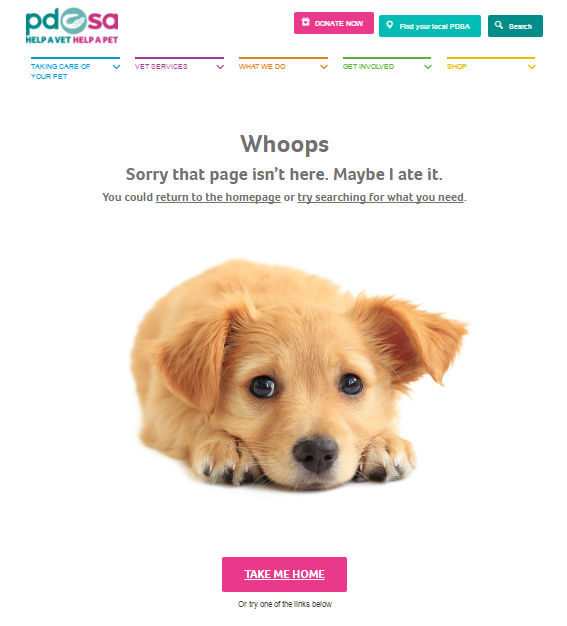We’re quickly moving towards a future where driverless cars and robotic voice activated home assistants could be the new normal. Although this may still seem like a distant prospect for most of us, digital and technological advancements are increasingly affecting public behaviour and expectations – especially when it comes to parting with money.
I am not saying anything new when I say that it is imperative that charities keep up in this brave new world; however, I strongly believe it bears repeating when it is expected that 50% of all UK donations will be made online by 2020, up from 15% in 2015[1]. Two key takeaways from a recent Google charity ‘brain-boggling’ day were that charities which accepted donations online could double in size, while those that are digitally mature are 28% more likely to report an increase in funding[2]. It is hard to ignore statistics like these.
Our recent blog about Oxfam’s MyOxfam app highlights the user engagement and fundraising possibilities that digital innovation at a relatively advanced level (for charities) opens up. However, while we might encourage it, we understand that not all charities have the resources to follow in Oxfam’s footsteps.
With this in mind (and following our own website renovation), we’ve put together some simple, cost effective suggestions which could help enhance your charity’s online presence. Depending on the size of your charity, this could serve as a starting point or as a checklist to ensure you’re on the right track.
- Have it clear in your mind what you want your website to do for you; is it a component of the services you offer, a fundraising tool, or both? Is your goal reflected in the way the website is structured? Get a second opinion – people outside of your organisation may not necessarily view your website the same way you do.
- Our recent survey into public attitudes revealed that the public rank transparency on spending as the main factor that would encourage them to give. Other high ranking factors include learning about the impact the charity has, positive stories about the charity in the media, and case studies about individuals that have been helped by the charity. If you’re using your site for fundraising, showcasing these elements could maximise the chances of donations being made.
- Know your audience. Google Analytics is a great tool to help you understand where your audience is geographically, what devices they use to access your site, and what pages are most visited. Use this information to ensure your website is tailored to the journeys your visitors make.
- Ensure your website can be found! Did you know that charities can get free advertising with Google AdWords using a Google grant? You can also ensure the content on your website is search engine optimised by following basic SEO principles.
- Your site should look great on desktop, and also on mobile too - especially considering that Google recently introduced penalties for websites that aren’t optimised for mobile. Our research finds that 45% expect donating online or by their phone to take less than 1 minute, and 43% would give up if it took more than 5 minutes. How do you fare? You can check how mobile friendly your site is here: https://testmysite.thinkwithgoogle.com
- “A website is an asset that requires ongoing maintenance and investment.”[3] Is your content and branding up-to-date? Do all your website links work? According to a recent poll[4], 72% of the public said they would not donate to a charity with broken links. You can find broken links using Screaming Frog SEO spider for free. It’s also worth giving a thought to whether or not you have a 404 page (the “error – page not found” page) and how it is presented; don’t miss the opportunity to direct users back to working pages on your website. You can check your 404 page by typing in “404” after your website URL. For example - https://www.pdsa.org.uk/404 :

- If you’re interested in assessing your digital maturity, use the Third Sector Digital Maturity Matrix to identify gaps in capability, prioritise areas for development and measure maturity over time to understand positive or negative change.
- As Will Howells said in his blog “Why we’re embracing digital innovation” for CharityComms - don’t innovate for the sake of innovation. Things that work for other charities may not work for you. If in doubt, aim for clarity, simplicity and user friendliness.
The digital challenge currently facing charities is neatly summed up in the Charity Today 2017 report:
While it may not yet be feasible for charities to compete with the speed and ease of transactions that large online retailers have made possible, taking steps towards ensuring some digital competency could significantly help a charity achieve its awareness and fundraising goals.
We love to hear your thoughts - please share what you think about the digital challenge currently faced by charities in the comments (located beneath the 'share this article' buttons).
[1] Whatever Next? Public Engagement in 2022, CharityComms, http://www.charitycomms.org.uk/articles/you-may-have-noticed-the-world-is-changing [Accessed February 2017]
[2] Charities learn how to grow online presence, Charity Digital News, http://www.charitydigitalnews.co.uk/2017/02/09/charities-learn-how-to-grow-online-presence/ [Accessed February 2017]
[3] 404 Page Not Found :(, Fundraising Magazine, February 2017
[4] Ibid.
Thanks for a great blog, just
Thanks for a great blog, just what this digitally-challenged reader needed - both the ideas and the links.

